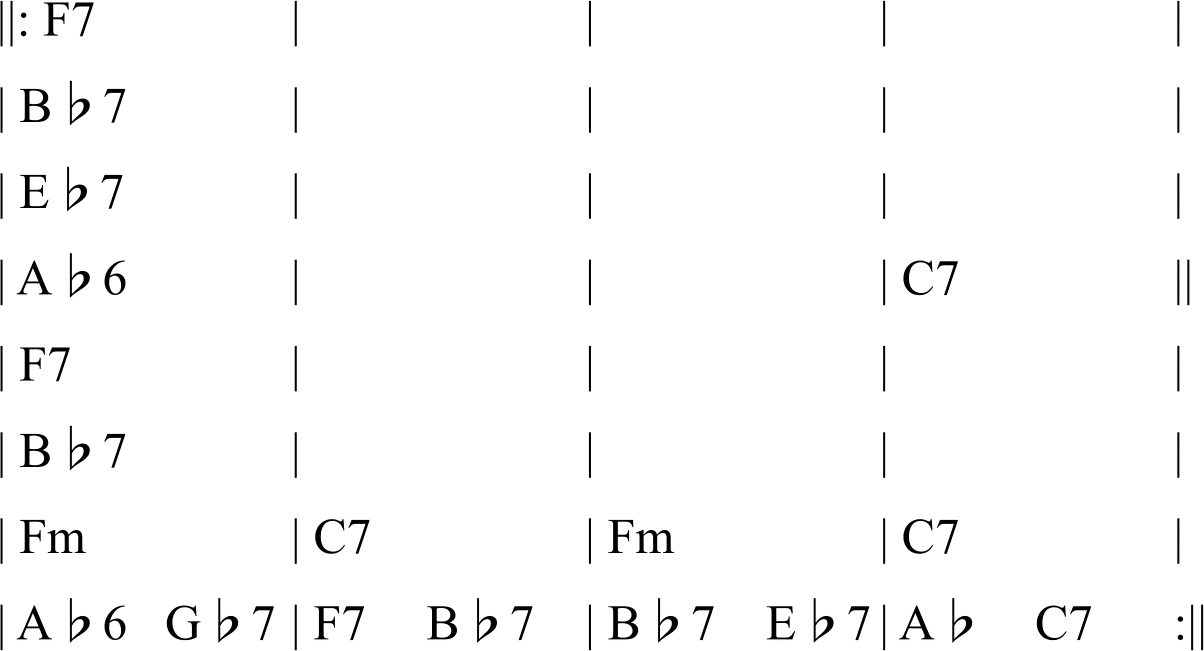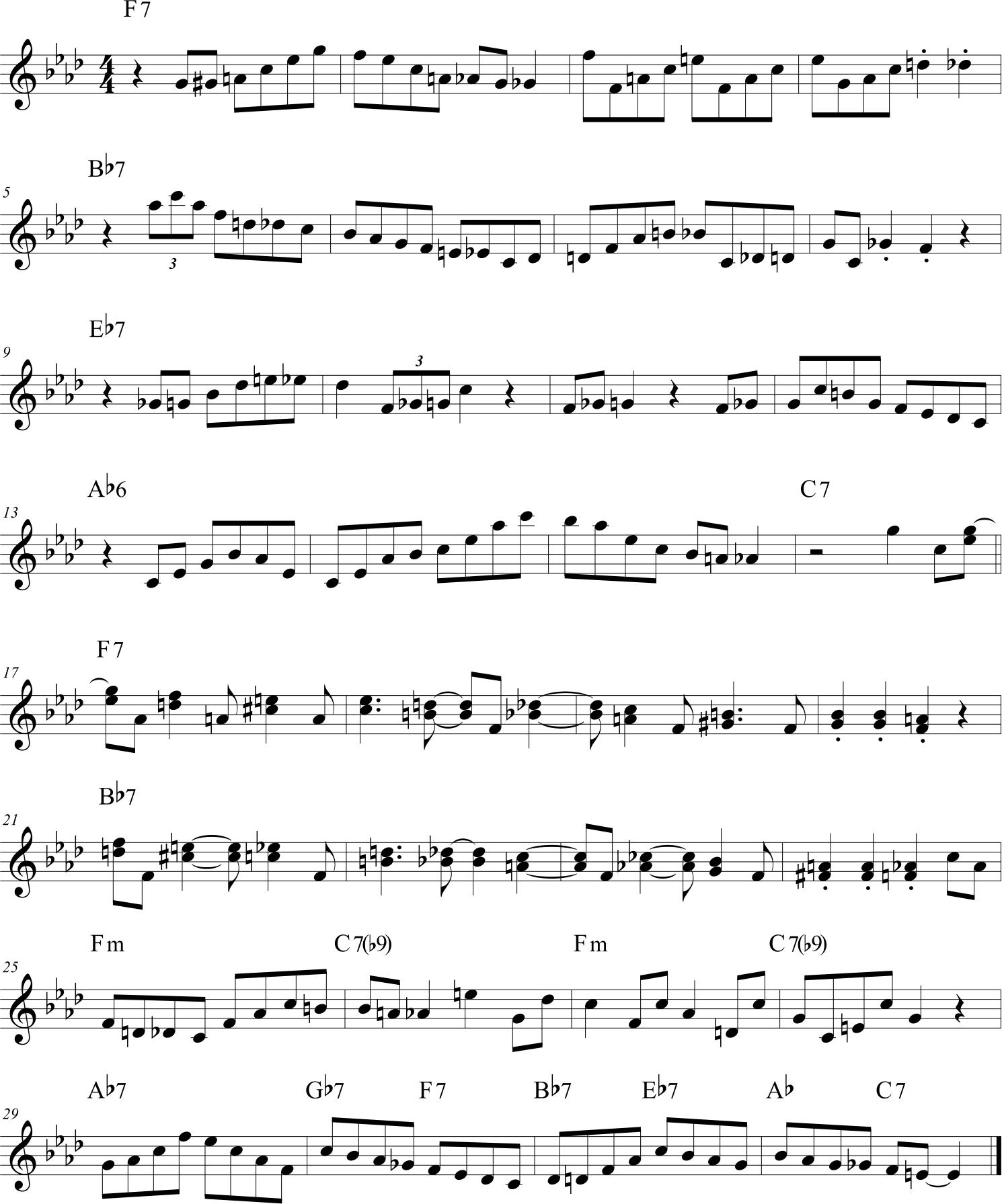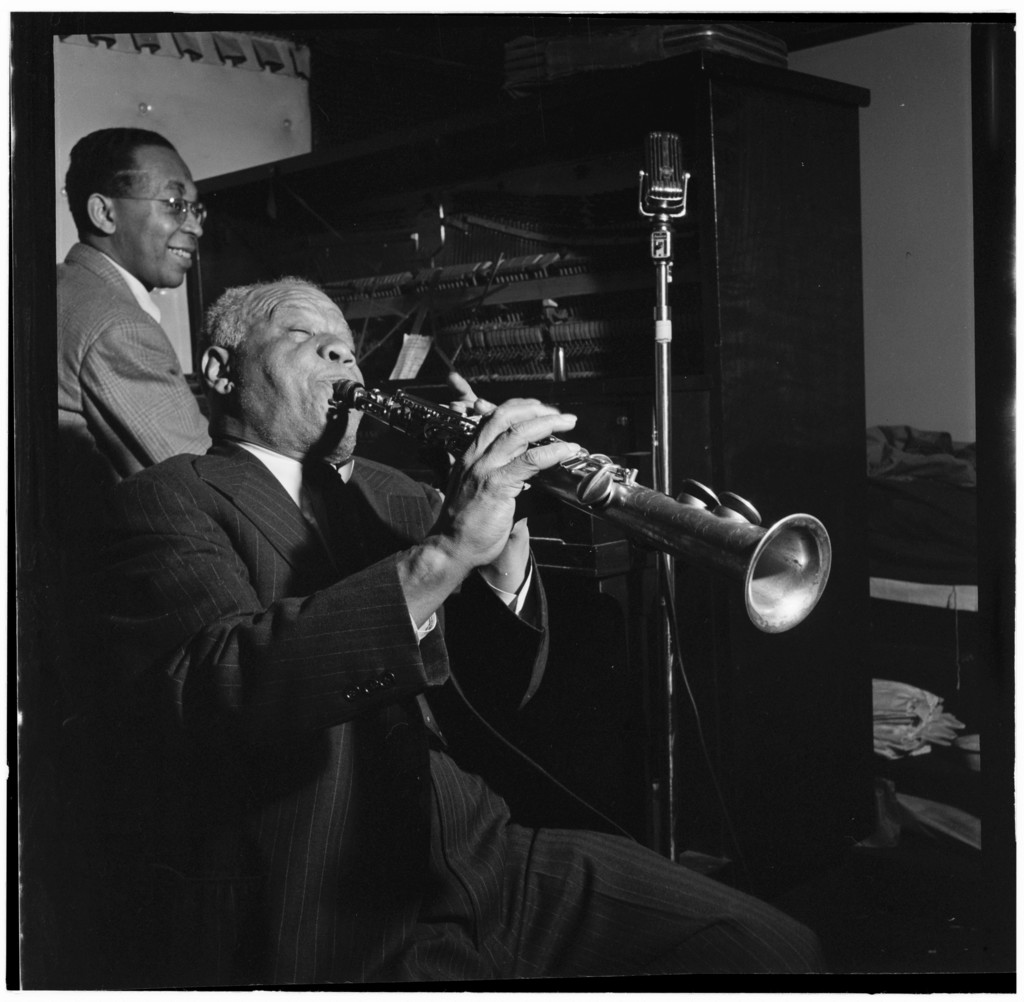[Monday Notes no. 99] Sweet Georgia Brown is a song that dates back to 1925, when jazz was taking its first steps. The piece became a very popular jazz standard and Miles Davis used its harmonic progression in his song Dig. We hear a version by Sidney Bechet, a true master of 1920s jazz.
The repertoire of the 1920s is simpler and more melodic than later jazz, yet Sweet Georgia Brown is a special case: not many jazz pieces have only one chord every four measures. Let us look at the harmonic progression of Sweet Georgia Brown.

We observe that seventh chords follow one another throughout the first part. It is a series of concatenated secondary dominants. On the finale, the chords get denser, up to one per measure.
One of the peculiarities of early jazz is the prevalence of the ensemble over the individual soloists; indeed, we note that in the first performance of the theme, the woodwinds overlap, all playing perfectly interwoven lines at the same time. The series of solos follows, beginning with pianist Buddy Weed.

The solo is mainly built on arpeggios and three-note ascending chromatic phrases. Buddy Weed performs a single chorus improvisation, as do Jonah Jones on trumpet and Jimmy Archey on trombone. Sidney Beceht, on the other hand, performs two choruses on soprano saxophone. From the band leader one expects more than just one solo chorus.
The finale is still collective and is a true explosion of energy. Sidney Bechet remained faithful to the jazz of the origins and was one of its greatest ambassadors in Europe, where he lived for long periods.
Until next Monday


